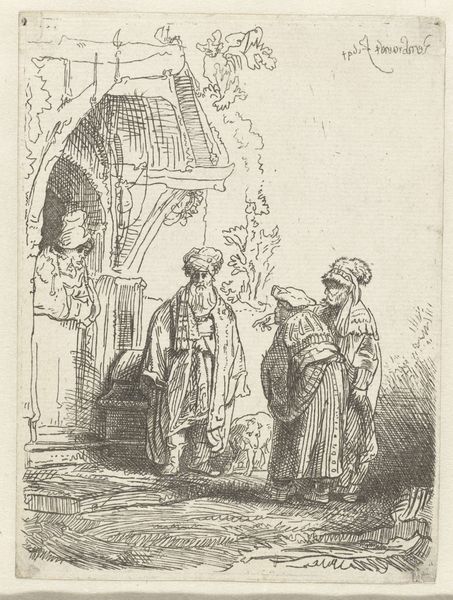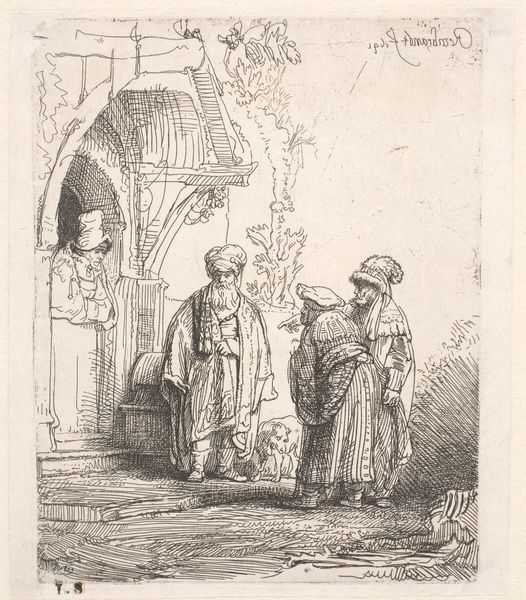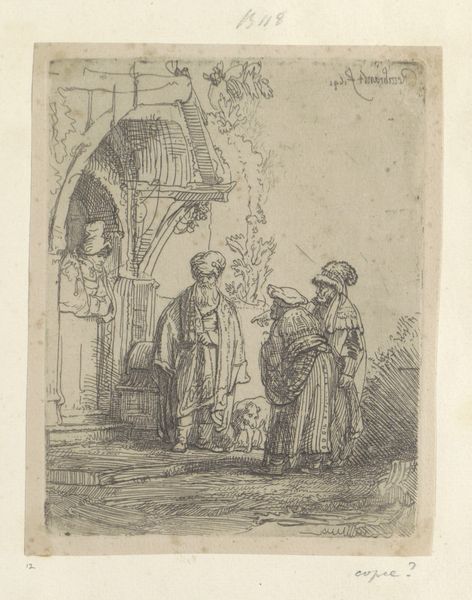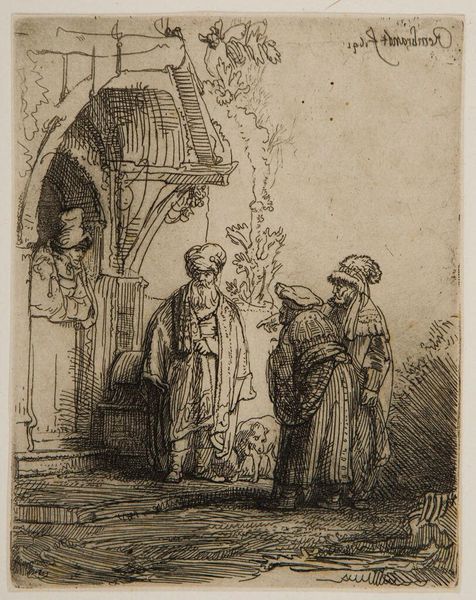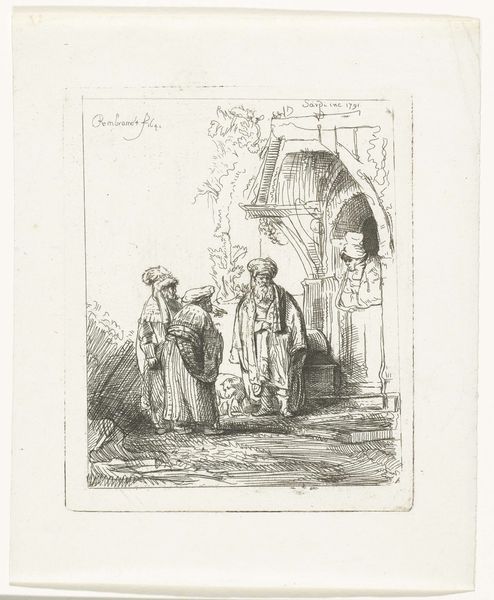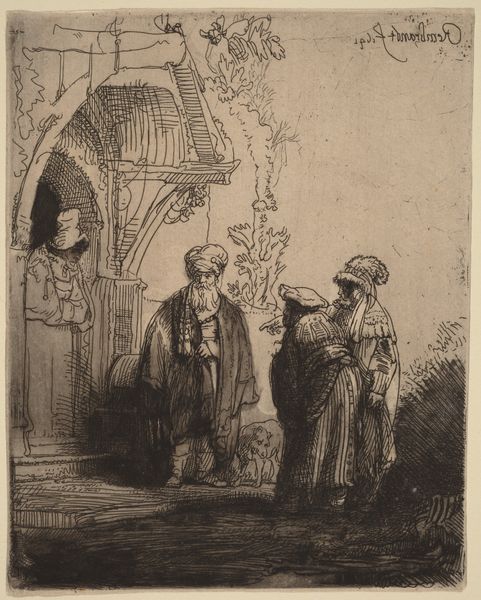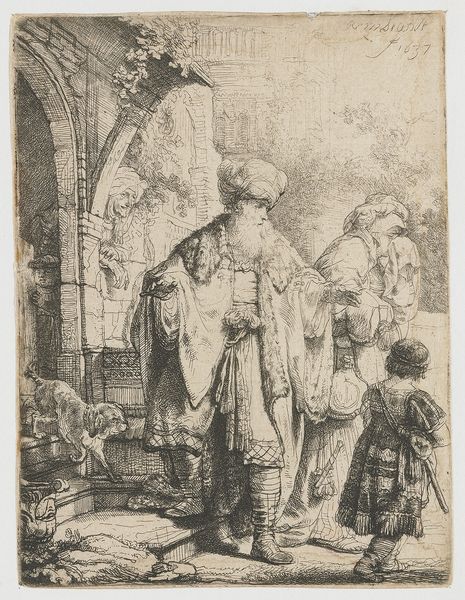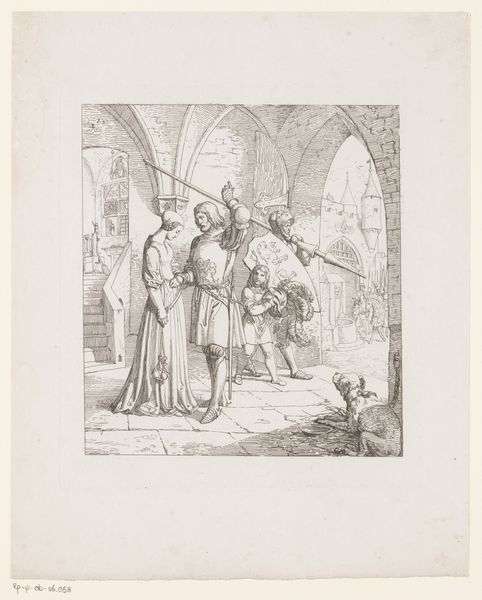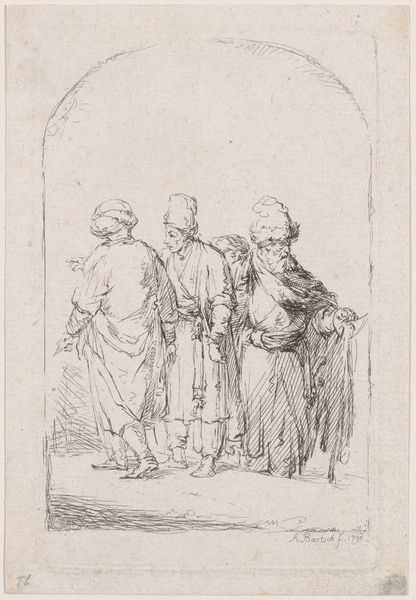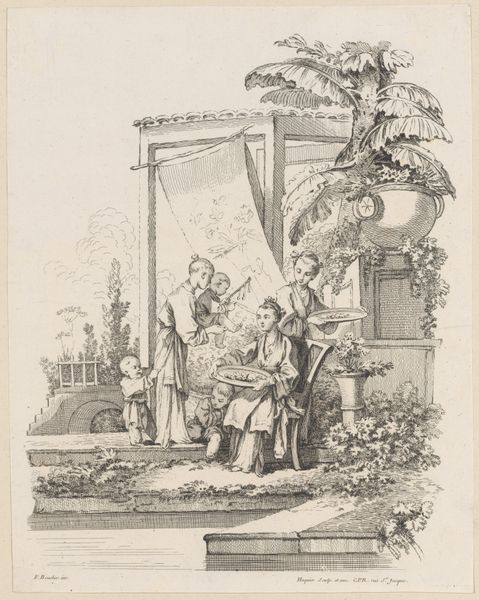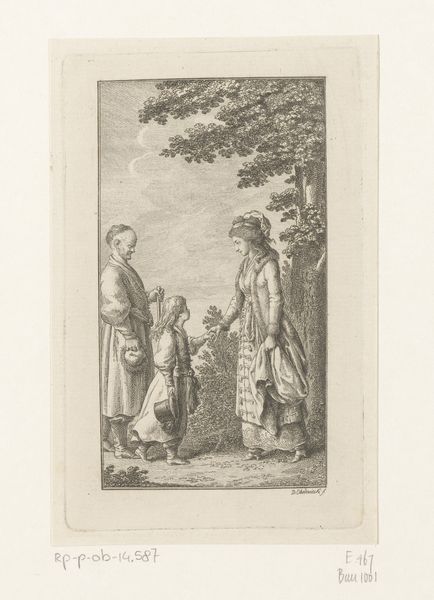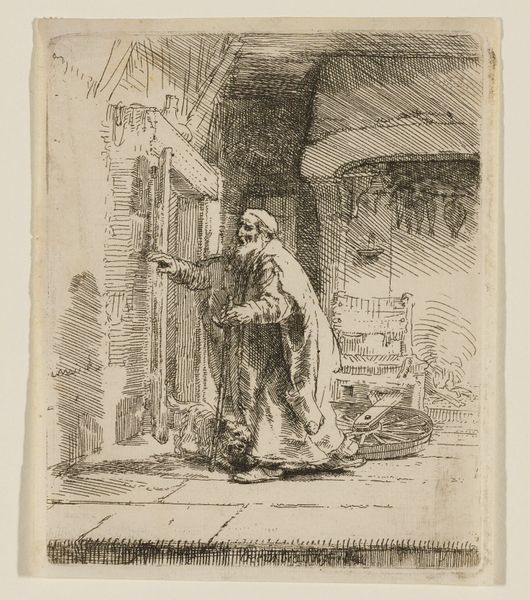
drawing, print, etching, ink, pen
#
portrait
#
drawing
#
narrative-art
#
baroque
# print
#
etching
#
landscape
#
figuration
#
ink
#
group-portraits
#
line
#
pen
#
history-painting
Dimensions: 5 11/16 x 4 1/2 in. (14.5 x 11.5 cm) (sheet)
Copyright: Public Domain
Editor: This is Rembrandt van Rijn's "Jacob and Laban," created in 1641 using etching, drypoint, and burin. I'm immediately struck by the intense detail and the expressiveness achieved with such simple lines. What do you see in this piece, from a cultural standpoint? Curator: For me, this print is a lens through which to examine 17th-century Dutch societal values and religious interpretation. Rembrandt, choosing this Old Testament scene, presents a visual discourse on family, negotiation, and perhaps, exploitation. Look at Laban's garb, and those of the men he's conferring with. What might those details suggest to you, knowing this was produced during the Dutch Golden Age, a period of intense trade and colonialism? Editor: Well, they appear rather opulent. Is Rembrandt perhaps commenting on the burgeoning merchant class of the time? Curator: Precisely. The artist isn't simply illustrating a Bible story. Instead, he’s grounding a Biblical narrative within a contemporary understanding of wealth, power dynamics, and, I would argue, the patriarchal structures of the time. Consider how the female figure stands behind the shadowed archway; what meaning might we ascribe to that positioning, in contrast to the gathering of male figures? Editor: It makes you wonder about the limitations imposed upon women then. Thanks, I now see more layers to what at first glance appears a simple drawing. Curator: And it speaks volumes, doesn't it, about Rembrandt's social awareness and the power of art to not only reflect but also critique the society that birthed it.
Comments
No comments
Be the first to comment and join the conversation on the ultimate creative platform.
